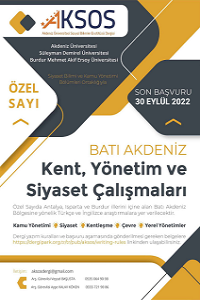THE VOCABULARY LEARNING STRATEGIES OF HIGH SCHOOL EFL LEARNERS
In all schools in Turkey, English is a compulsory subject. Therefore, English is taught for two hours a week depending on the school type or grade. Since vocabulary is regarded as a crucial aspect in language learning, the purpose of the study is to investigate the vocabulary learning strategies adopted by 9th grade students, to find out which vocabulary learning strategies used most and the least. Another purpose of this study is to find whether there were any differences between male and female learners regarding strategy use. 172 9th grade students took part in this study and they were asked to fill in a questionnaire of 25 vocabulary learning strategy items. Also, a semi-structured interview with ten students was held. The data was analyzed by using frequency, percentages, and means. The mostly used strategies were Social (Discovery) and Determination Strategies and the least ones are Social (Consolidation) and Metacognitive Strategies. No significant difference of strategy use between female and male students was observed. However, when the strategy items were examined individually, slight differences were observed. The findings contributed the teachers in terms of improving themselves and their students about the instruction of VLSs and it also helped the teachers to select appropriate course books and materials related with the strategy use of their students.
Anahtar Kelimeler:
Vocabulary, vocabulary learning strategies
___
- Asgari, A., & Mustapha, G. B. (2011). The type of vocabulary learning strategies used by ESL students in University Putra Malaysia. English language teaching, 4(2), 84.
- Cameron, L. (2001). Teaching languages to young learners. Cambridge: Cambridge University Press.
- Ellis, N. C. (1996). Working memory in the acquisition of vocabulary and syntax: Putting language in good order. The Quarterly Journal of Experimental Psychology Section A, 49(1), 234-250.
- Folse, K. S., & Briggs, S. J. (2004). Vocabulary myths: Applying second language research to classroom teaching (No. Sirsi) i9780472030293). Ann Arbor: University of Michigan Press.
- Gu, Y., & Johnson, R. K. (1996). Vocabulary learning strategies and language learning outcomes. Language learning, 46(4), 643-679.
- Levenston, E. A. (1979). Second language acquisition: Issues and problems. Interlanguage studies bulletin, 147-160.
- McCarthy, M. J. (1984). A new look at vocabulary in EFL. Applied linguistics, 5(1), 12-22.
- Neuman, S. B., & Dwyer, J. (2009). Missing in action: Vocabulary instruction in pre‐K. The reading teacher, 62(5), 384-392.
- Nunan, D. (1999). Second Language Teaching & Learning. Heinle & Heinle Publishers, 7625 Empire Dr., Florence, KY 41042-2978.
- O'Malley, J. M., O'Malley, M. J., Chamot, A. U., & O'Malley, J. M. (1990). Learning strategies in second language acquisition. Cambridge University Press.
- Oxford, R. (1990). Language learning strategies. New York, 3.
- Riankamol, N. (2008). A survey study of vocabulary learning strategies of gifted English students at Triam Udomsuksa School in the first semester of academic year 2008. Language Institute, Thammasat University.
- Schmitt, N. (2008). Instructed second language vocabulary learning. Language teaching research, 12(3), 329-363.
- Vann, R. J., & Abraham, R. G. (1990). Strategies of unsuccessful language learners. TESOL quarterly, 24(2), 177-198.
- ISSN: 2564-7091
- Yayın Aralığı: Yılda 2 Sayı
- Başlangıç: 2017
- Yayıncı: Akdeniz Üniversitesi
Sayıdaki Diğer Makaleler
KÜLTÜREL (YENİ) IRKÇILIK NEDİR? KURAMSAL BİR DEĞERLENDİRME
THE VOCABULARY LEARNING STRATEGIES OF HIGH SCHOOL EFL LEARNERS
Sosyolojik Araştırma, Yöntem ve Tekniklerinin Sosyal Medya Üzerinden Kullanımı
TÜRKİYE’DE ENFLASYON, İŞSİZLİK VE BÜYÜME’ NİN ASGARİ ÜCRET ÜZERİNDEKİ ETKİSİNİN EKONOMETRİK ANALİZİ
AMERİKA BİRLEŞİK DEVLETLERİNDE BİREYSEL SİLAHLANMA VE SONUÇLARI
